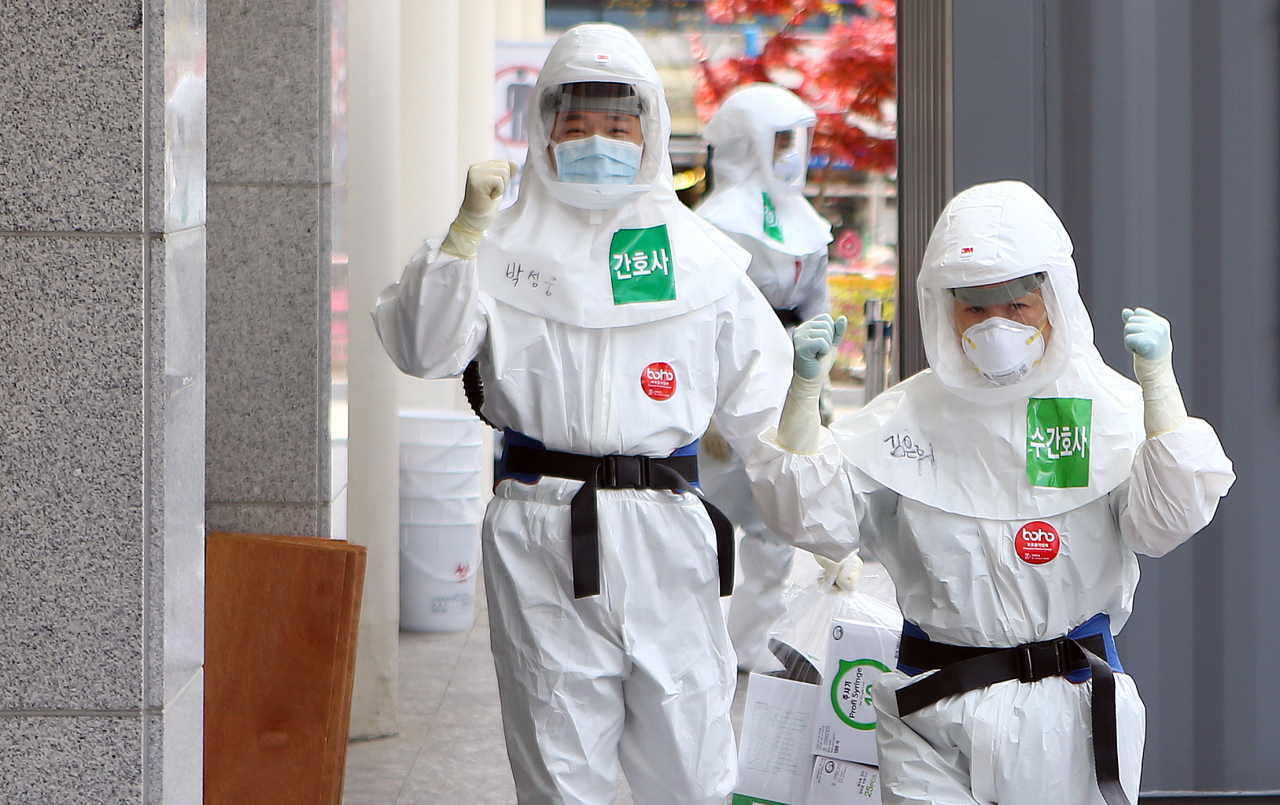Seoul beefing up equipment for second wave of COVID-19
By Kim Bo-gyungPublished : April 23, 2020 - 16:05

Korean health authorities said Thursday they were beefing up medical equipment against a potential massive coronavirus outbreak, saying the country could face another round worse than the initial outbreak in Daegu.
“Right now we have no shortage of ecmo (extracorporeal membrane oxygenation) devices and quarantine beds,” Yoon Tae-ho, a senior Health Ministry official, said at a daily virus update. “But we’re preparing for the possibility of a bigger outbreak (than happened in Daegu).”
The Korea Centers for Disease Control and Prevention Deputy Director Kwon Joon-wook said that COVID-19 could rise again at any point in time on a global scale, and new sources of viral infections will emerge continually.
“COVID-19 spreads through those who do not show symptoms and during incubation. It has a relatively low fatality rate and a relatively high basic reproduction number, which make it a virus with characteristics optimal to trigger a global pandemic. There is a high possibility of a second wave of infections.”
As of Thursday, South Korea’s novel coronavirus cases climbed to 10,702, up eight from the previous day, according to the KCDC.
The daily increase of COVID-19 patients rose by around 10 for the sixth day in a row.
Two more patients were killed from the virus, putting the number of deaths at 240, the KCDC said.
Korean health experts anticipated the dangerous contagion could surge again this fall, with the pattern of the virus infections rising and subsiding to repeat for about two years.
“Many experts expressed their opinion that there is a possibility of the novel coronavirus circulating again for the second time this fall and in the long run it could last for two years,” said Health Ministry official Yoon.
“Based on their opinion, we are making preparations assuming the coronavirus situation will continue ... similar to a flu.”
Health authorities said they are aiming to begin clinical trials of plasma therapy using captured plasma from virus survivors in July, though the treatment has yet to demonstrate concrete effectiveness.
They added there have been three domestic cases of plasma treatments.
As the country braces for another wave of infections, Kwon said those who are at high risk for the disease, such as heavy smokers and those who are obese or overweight, “should improve their lifestyle.”
Meanwhile, of the new patients, four came from Daegu, with one from Busan and Gyeonggi Province each and one from overseas.
Though the overall fatality rate averages 2.2 percent, the figure surges to 23.5 percent among patients in their 80s, stands at 10.03 percent for those in their 50s and is 2.6 percent for those in their 60s.
Patients newly released from isolation upon recovery came in at 134, totaling 8,411, the KCDC said.
By Kim Bo-gyung (lisakim425@heraldcorp.com)



![[Exclusive] Korean military set to ban iPhones over 'security' concerns](http://res.heraldm.com/phpwas/restmb_idxmake.php?idx=644&simg=/content/image/2024/04/23/20240423050599_0.jpg&u=20240423183955)




![[Herald Interview] 'Amid aging population, Korea to invite more young professionals from overseas'](http://res.heraldm.com/phpwas/restmb_idxmake.php?idx=644&simg=/content/image/2024/04/24/20240424050844_0.jpg&u=20240424200058)

![[Pressure points] Leggings in public: Fashion statement or social faux pas?](http://res.heraldm.com/phpwas/restmb_idxmake.php?idx=644&simg=/content/image/2024/04/23/20240423050669_0.jpg&u=)








